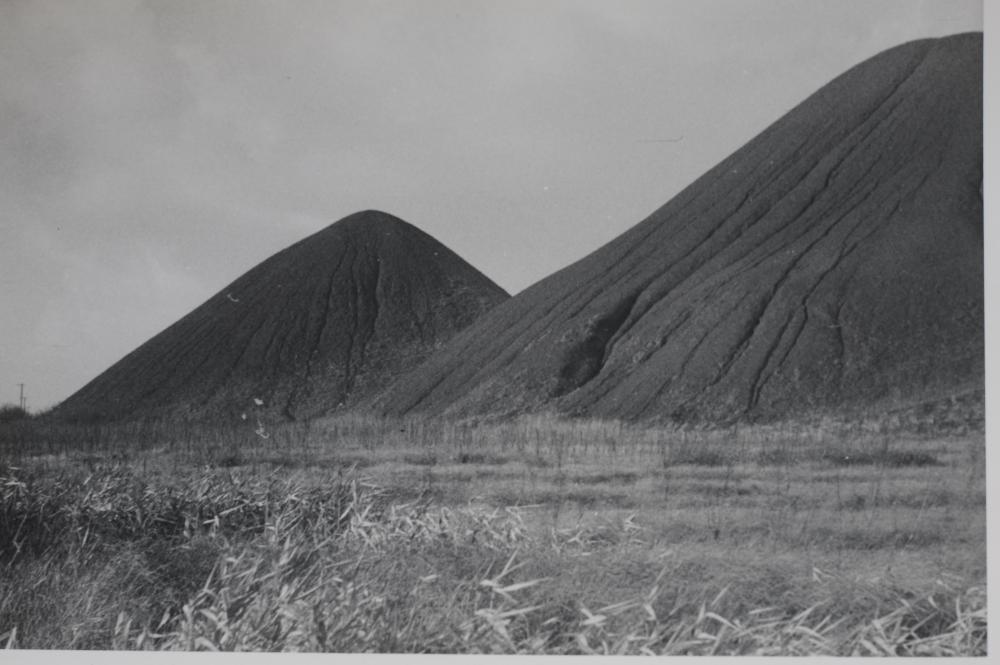Wigan Album
Aerial Flights
10 Comments
Photo: Mike Featherstone
Item #: 31986
ILOCAL CHILDRENS PLAY GROUND NO HEALTH& SAFETY IN THOSE DAYS HAPPY MEMORIES
Hi Mike, cracking photos. There aren't many good photos around of the Aerial Flights. Are you on Facebook? There are a couple of facebook groups called Memories of Hindley and Memories of Hindley Green. People on these groups are always interested in old photos of the district. If you are on facebook, I could get you onto the groups and you can post these and any other photos on there for the members to see.
If not, then would it be okay if I were to post them on the sites with an acknowledgment for you?
What always impresses me and makes me feel a bit humble is that all that dirt - in the millions of tons - was dug out by hand by men with picks & shovels working deep underground in very difficult conditions, before being transported to the surface along with the coal then dumped onto these rucks.
English Electric. . When I first went down the Maypole Colliery, Abram, Wigan, April, 1950, age sixteen. I was taken to what they term, the far end, by a ‘shot firer’, This is where the coal seams were. We walked through a main tunnel for a good mile, and then branched off into another tunnel, and then we came up against what I thought was a rock face. He said to me. “Climb up there”. I saw a gap, no more than eighteen inches high. I scrambled through the gap, the only illumination my helmet lamp. Ever conscious that there was over half a mile of earth above me. I pushed my can of water, and tin of sandwiches in front of me, and eventually came onto the coal face. My job was to operate a pan engine, a series of troughs, all joined together. The colliers’ spaded the coal onto the troughs, and the piston, moving backwards, and forwards, connected below one of the connecting troughs, shook the coal down the coal face, and onto the conveyor belt, at the lower coal face end. Happy days. Remuneration. £1.18 shillings a week.
it's just hills what is so good abouwt them
Is this the Three Sisters at Ashton?
Chris feel free to use these photos as you like I put them out for all to enjoy and re-live their youthful adventures. I am not on facebook sorry. Aerial Flights was located up Scowcroft Street (renamed Maple avenue) Hindley Green. There are two further photos in this set all taken on the same day I have just re-submitted them to appear with these three I hope! Mike Featherstone.
Thanks Mike.
Coal was mined in a small scale prior to the late 19th century all over the area. Sometimes hoisted up in wicker baskets, shafts were probably no more than 50 feet deep. With increasing demand for coal and technical advancement large Collieries sprung up. Deep shafts down to 1000 feet reached the rich coal seams. This required large steam engines to power the winding gear and large fans pushing fresh air down to the mine workings. To ensure a flow, air shafts had to be sunk. Coal powered the expanding Railways, Ships both the British Merchant Fleet and the Royal Navy. Powered Factories and Cotton mills. Coal heated the homes, provided Town Gas for cooking and lighting (both in the home and in the streets) The miners faced daily danger, accidents and Pit disasters were very common.
On 25 November 1869 a underground explosion at Scowcroft St Pit took the lives of 62 miners including boys as young as 12. At Grammar Pit on 15 November 1871 6 men were killed in another underground explosion. All were married leaving 6 widows and a total of 18 children without a father. (no social security in those days) John Scowcroft & Co Ltd lost 78 lives including these and other accidents. Other incidents involving severe injuries are not recorded. If a mineworker survived till retirement he most likely suffered from lung disease caused by years of breathing in coal dust, resulting in an early death. The miners helped to make Britain a world power. Their aim was to put bread on the table for their families. These slag heaps were silent memorial to these men.